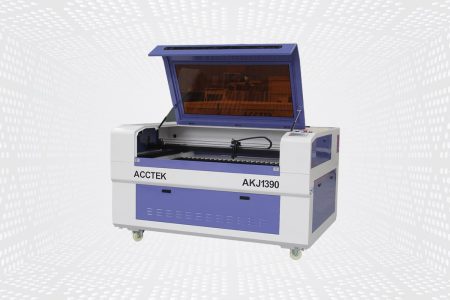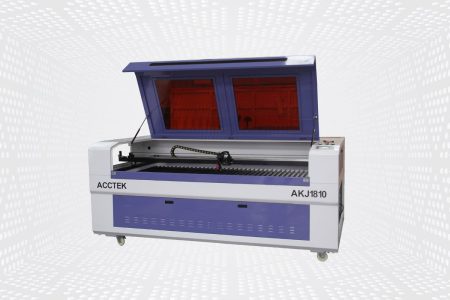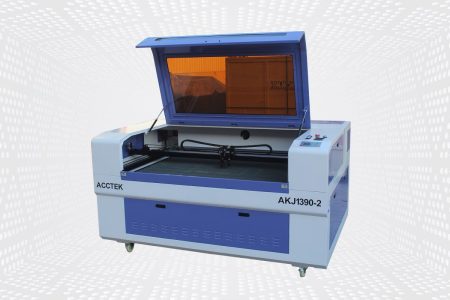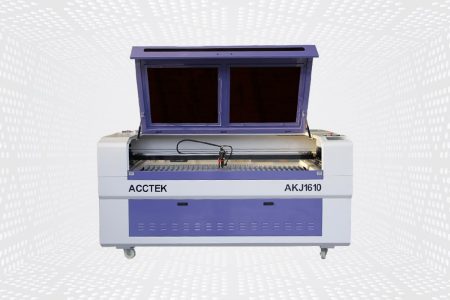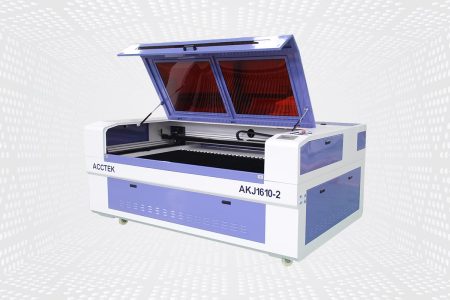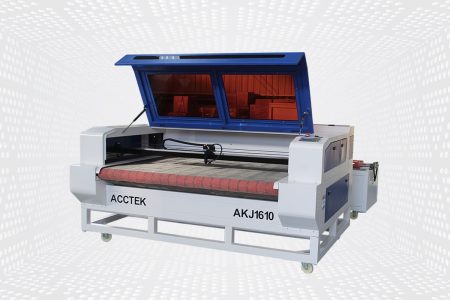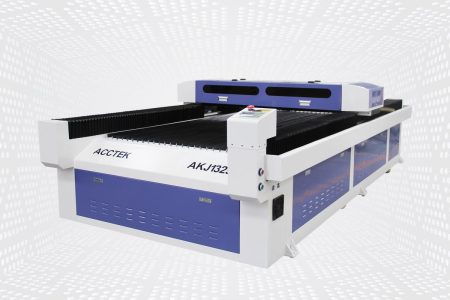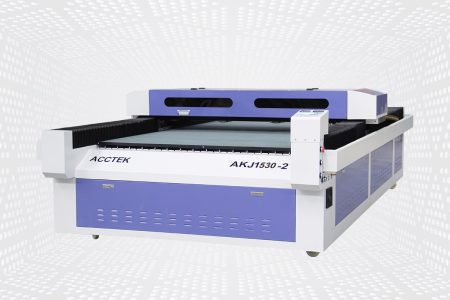Fabric Laser Cutting Machine
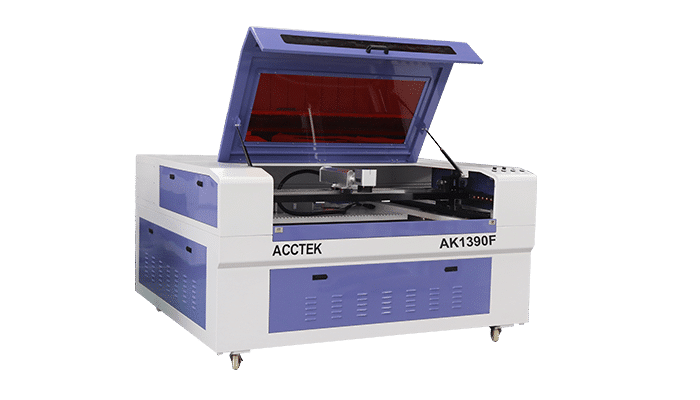

Photoelectric Technology
AccTek Laser focus on designing and manufacturing photoelectric-related system. We provide accurate and exquisite processing quality with leading R&D capability.
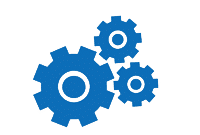
Integration Ability & Experienced
With an experienced, completed, and elite R&D team, customized such as automated, integrated with the robot, system integration, etc. are all available.
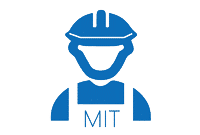
Professional Service
AccTek Laser's laser cutting machine is a professional laser cutting machine designed and manufactured in China. Our elite engineering team provides related service support.
Equipment Features
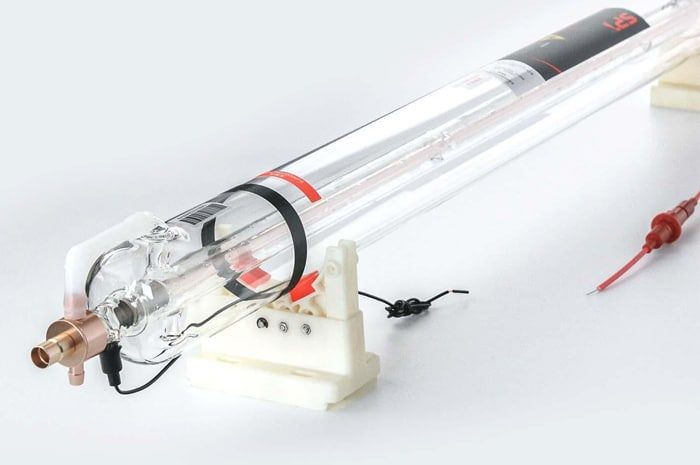
High Power CO2 Laser Tube
The machine is equipped with a powerful CO2 laser tube, which can provide precise and efficient cutting and engraving performance on various materials, including acrylic, wood, leather, fabric, glass, and so on. A high-powered laser tube ensures clean, precise cuts and smooth edges, while also enabling detailed engraving, making it suitable for intricate designs and industrial applications.
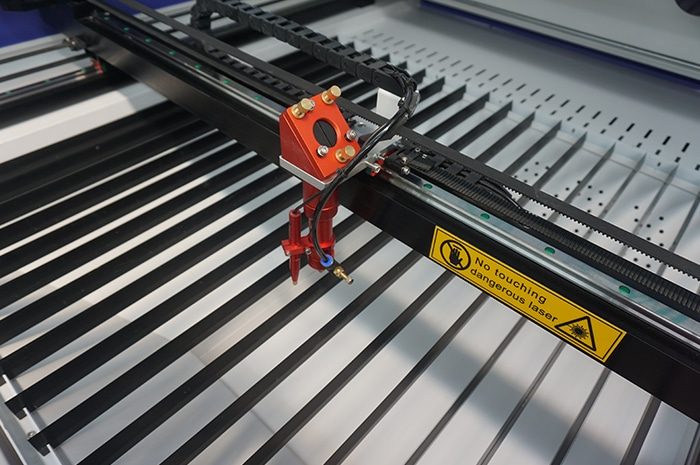
Advanced Motion System
The machine is equipped with an advanced motion system to ensure smooth and accurate movement of the laser head during cutting and engraving. This precise motion control enables clean, sharp cuts while also enabling detailed and intricate engraving on a variety of materials.
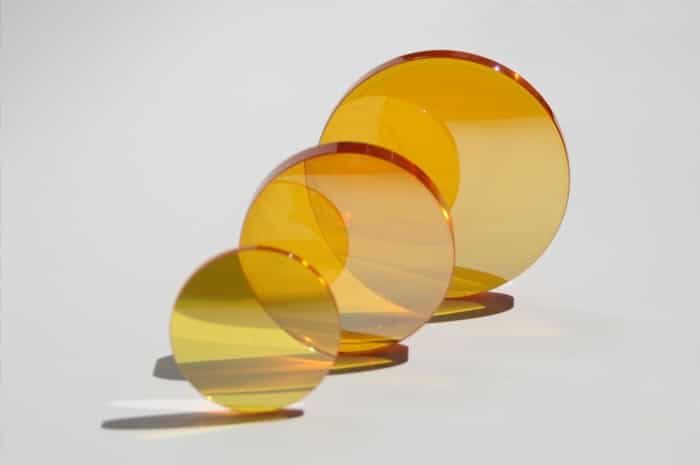
High-Quality Optics
The machine is equipped with high-quality optics capable of producing a narrower, more stable laser beam, ensuring precise cutting paths and cleaner edges even on complex designs and delicate materials. In addition, high-quality optics help reduce beam divergence and losses, thereby improving energy efficiency.
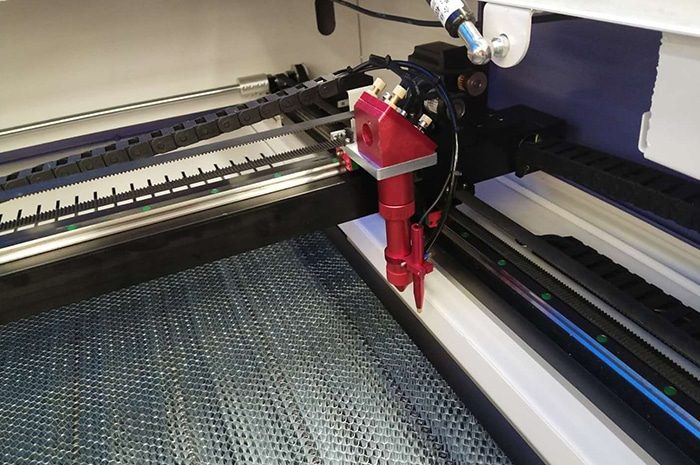
High-Precision CO2 Laser Head
The high-precision CO2 laser head is selected, and it has a red dot positioning function to ensure that the laser beam is precisely aligned with the focusing optics and the nozzle. An accurate laser beam contributes to consistent and uniform cutting results. Additionally, the CO2 laser head is equipped with height control, which ensures consistent focus and compensates for any variations in material thickness or uneven surfaces.
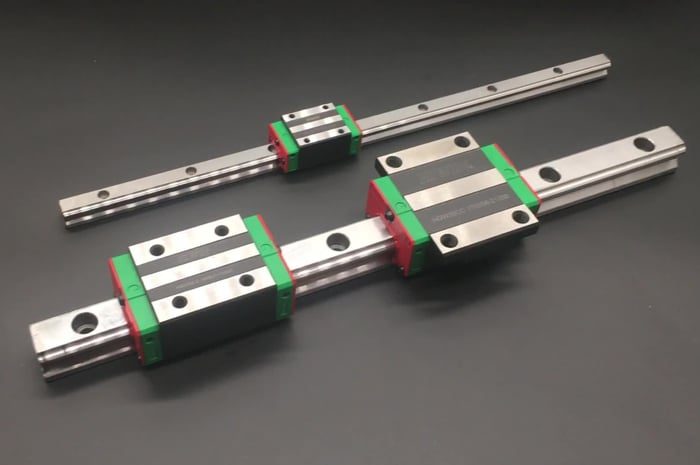
High-Precision HIWIN Rail
The machine is equipped with a Taiwan HIWIN guide rail with excellent precision. HIWIN is manufactured to tight tolerances, ensuring smooth and stable linear motion. This level of precision contributes to accurate and consistent laser cutting, especially when working with intricate designs and fine details. In addition, HIWIN rails are designed to minimize friction, resulting in smooth and quiet movement.
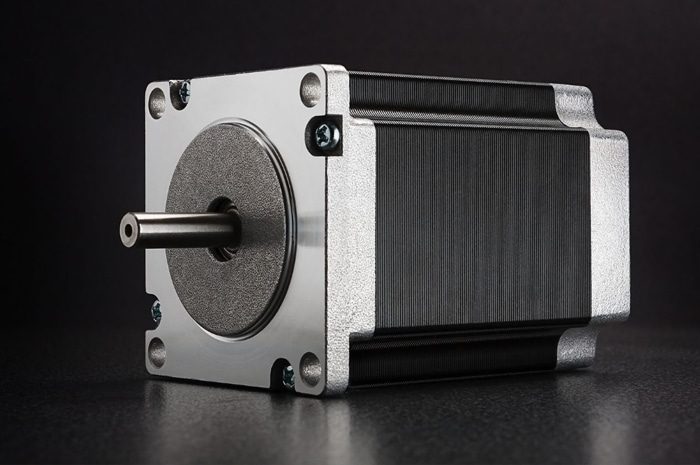
Reliable Stepper Motor
The machine adopts a stepper motor with strong power and reliable performance to ensure the normal operation of the machine. Not only are stepper motors cost-effective, but they also provide precise control of moving parts, ensuring high-quality laser cutting and stable positioning of optical components for reliable, efficient operation.
Technical Specifications
| Model | AKJ-6040 | AKJ-6090 | AKJ-1390 | AKJ-1610 | AKJ-1810 | AKJ-1325 | AKJ-1530 |
|---|---|---|---|---|---|---|---|
| Working Area | 600*400mm | 600*900mm | 1300*900mm | 1600*1000mm | 1800*1000mm | 1300*2500mm | 1500*3000mm |
| Laser Medium | CO2 laser | ||||||
| Laser Power | 80-300W | ||||||
| Power Supply | 220V/50HZ, 110V/60HZ | ||||||
| Cutting Speed | 0-20000 mm/min | ||||||
| Engraving Speed | 0 - 40000mm/min | ||||||
| Min Line Width | ≤0.15mm | ||||||
| Position Accuracy | 0.01mm | ||||||
| Repetition Accuracy | 0.02mm | ||||||
| Cooling System | Water-cooling | ||||||
Laser Welding Capacity
| Laser Power | Cutting Speed (Monolayer) | |
|---|---|---|
| 25W | Max Cutting Speed | 25mm/s |
| Optimal Cutting Speed | 20mm/s | |
| 40W | Max Cutting Speed | 40mm/s |
| Optimal Cutting Speed | 38mm/s | |
| 60W | Max Cutting Speed | 60mm/s |
| Optimal Cutting Speed | 58mm/s | |
| 80W | Max Cutting Speed | 100mm/s |
| Optimal Cutting Speed | 98mm/s | |
| 100W | Max Cutting Speed | 200mm/s |
| Optimal Cutting Speed | 195mm/s | |
| 130W | Max Cutting Speed | 300mm/s |
| Optimal Cutting Speed | 295mm/s | |
| 150W | Max Cutting Speed | 400mm/s |
| Optimal Cutting Speed | 395mm/s | |
| 180W | Max Cutting Speed | 500mm/s |
| Optimal Cutting Speed | 495mm/s | |
| 200W | Max Cutting Speed | 600mm/s |
| Optimal Cutting Speed | 590mm/s | |
Comparison of Different Cutting Methods
| Features | Laser Cutting | Die Cutting | Ultrasonic Cutting | Electric Scissors |
|---|---|---|---|---|
| Cutting Precision | Highly precise and detailed cuts | Precise and consistent shapes | Clean and precise cuts | Suitable for simpler cutting tasks |
| Cutting Speed | High cutting speed | Suitable for mass production | Moderate cutting speed | Moderate cutting speed |
| Material Compatibility | Suitable for a wide range of fabric types | Suitable for various fabric types | Effective for synthetic fabrics | Limited to simpler cutting tasks |
| Fraying and Distortion | Minimal fraying or distortion | Minimal fraying or distortion | Prevents fraying of synthetic fabrics | May cause fraying, especially on delicate fabrics |
| Versatility | Ideal for intricate designs and patterns | Cuts multiple layers of fabric simultaneously | Ideal for sportswear and technical textiles | Limited versatility, best for straightforward cuts |
| Production Scale | Suitable for both small-scale and industrial use | Ideal for mass production | Commonly used in industrial applications | Primarily for home sewing and crafting |
| Additional Processing Needed | Typically no additional sealing or finishing needed | May require additional sealing or finishing | Typically no additional sealing or finishing needed | May require additional sealing or finishing |
| Energy Source | Requires electricity and a laser source | Requires a mechanical press and dies | Requires electricity | Requires electricity |
| Automation | Often fully automated | Can be automated for production | Manual operation | Manual operation |
| Set-Up Time | Requires initial set-up | Requires die creation/setup | Quick setup, no dies needed | Minimal setup |
| Maintenance | Regular maintenance required | Die maintenance needed | Minimal maintenance | Minimal maintenance |
| Special Considerations | Eye protection needed due to laser | Requires die creation | May require specific fabric types | Suitable for simpler tasks |
Product Features
- This machine uses a high-power CO2 laser source, which is ideal for cutting a variety of fabric materials. The power of the laser source can be varied, allowing for different levels of cutting speed and thickness.
- The machine has high precision and accuracy, allowing for precise cuts and intricate details.
- The machine has an autofocus feature that ensures the laser remains in the correct focus with the fabric surface, resulting in consistent and precise cuts even on uneven fabrics.
- The machine can adjust the speed and power of the laser beam to optimize cutting results for different fabric types and thicknesses.
- The machine supports various file formats (e.g. DXF, AI) and is compatible with popular design software.
- The machine is equipped with a red dot pointer that positions and aligns the laser cutting path before starting the actual cutting.
- The machine’s control software features a user-friendly interface that simplifies the process of importing designs and setting cutting parameters.
- The machine comes with a preset material database that stores cutting parameters for various fabric types, simplifying the setup process and ensuring optimal cutting results.
- The machine has safety features such as emergency stop buttons, interlocking systems, and laser safety enclosures to protect operators from potential hazards.
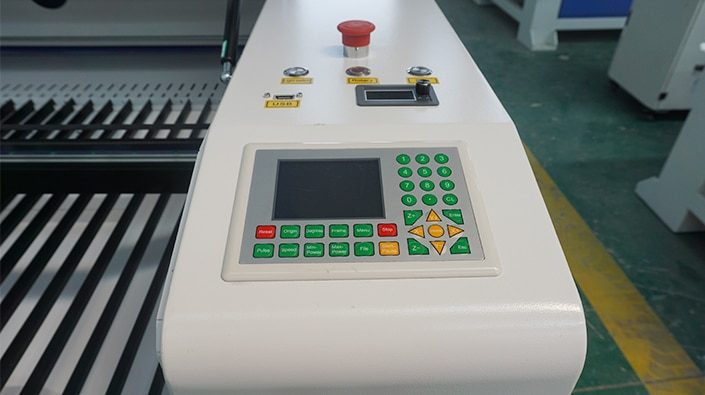
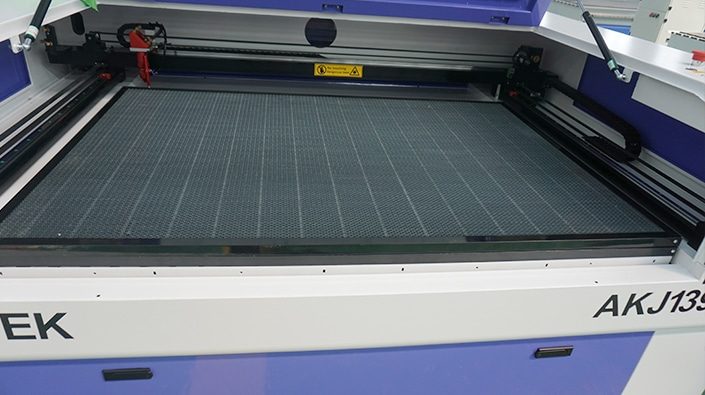
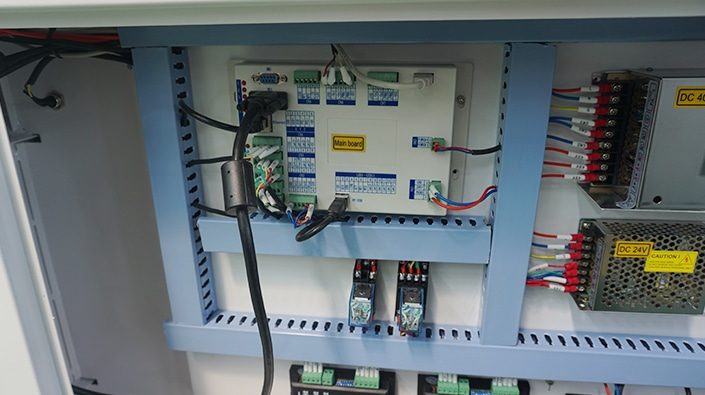
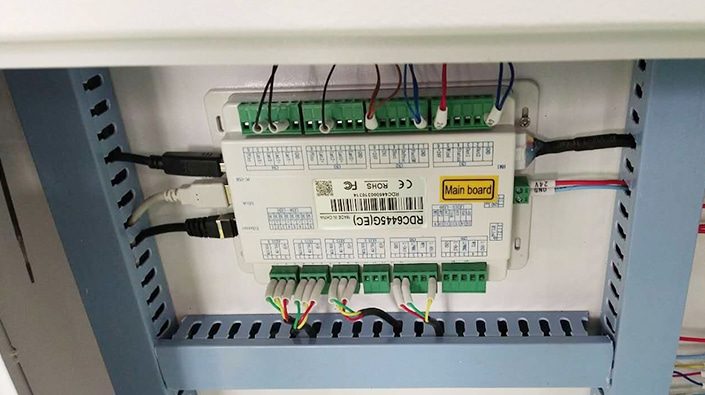
Product Application
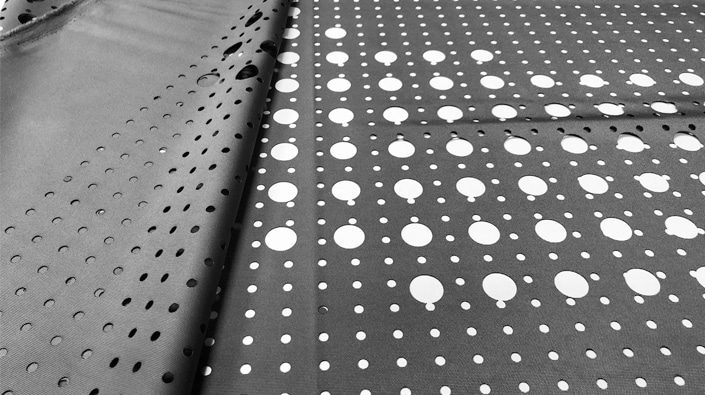
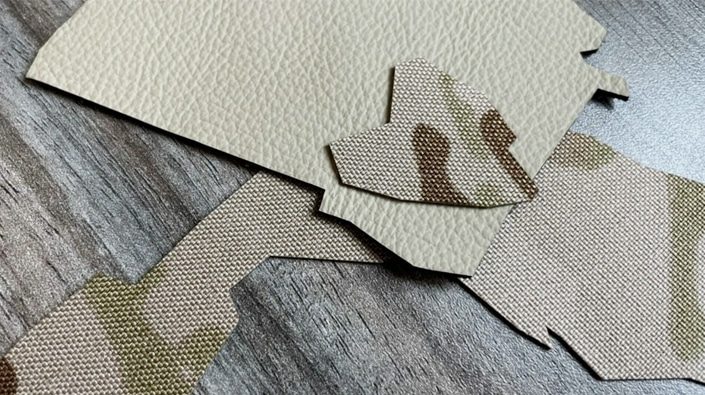
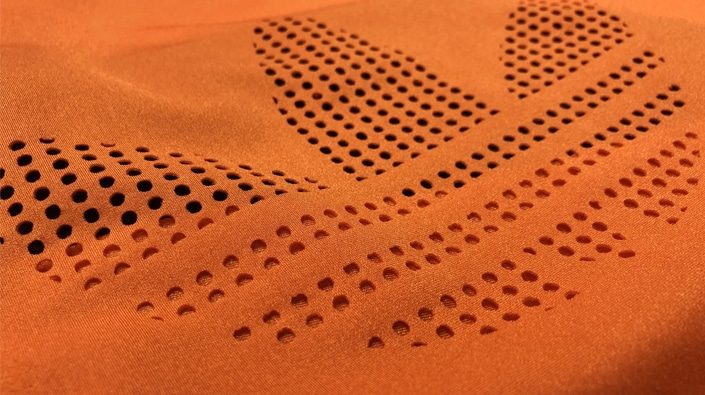
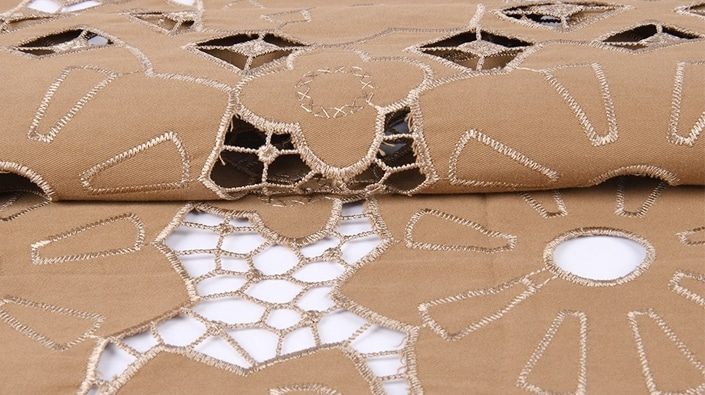
Equipment Selection
High Configuration CO2 Laser Cutting Machine
CO2 Laser Cutting Machine With CCD Camera
CO2 Laser Cutting Machine With Electric Lift Table
Fully Enclosed CO2 Laser Cutting Machine
Double Head CO2 Laser Cutting Machine
CO2 Laser Cutting Machine With Automatic Feeding Device
Large-Size CO2 Laser Cutting Machine
Double Head Large Size CO2 Laser Cutting Machine
Why Choose AccTek?
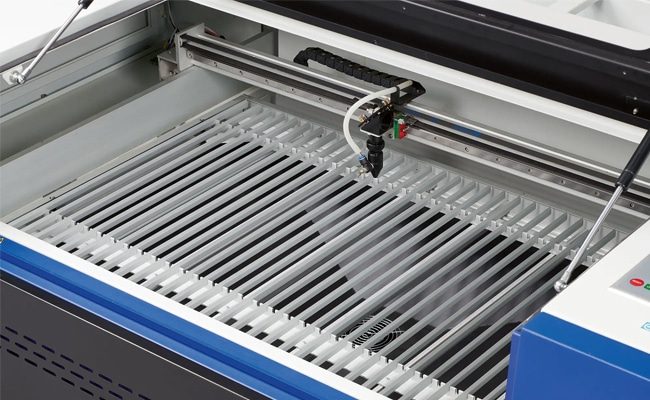
Impeccable Precision
Unrivaled Quality
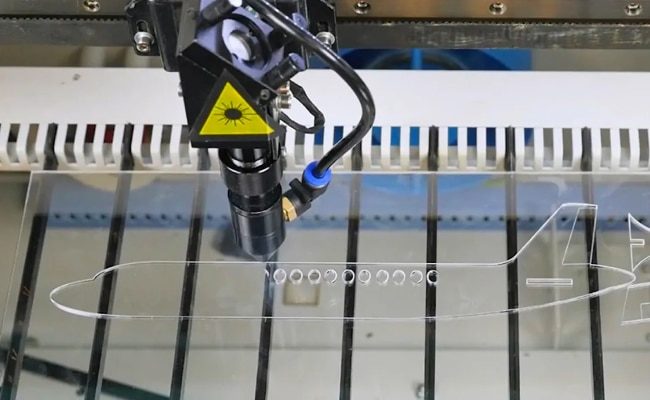
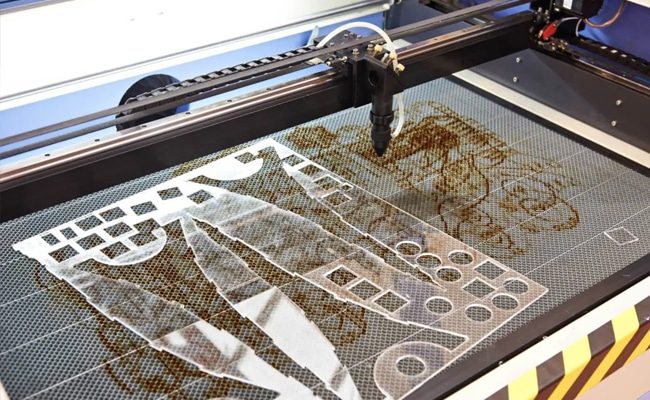
Customized Solutions
Excellent Customer Support
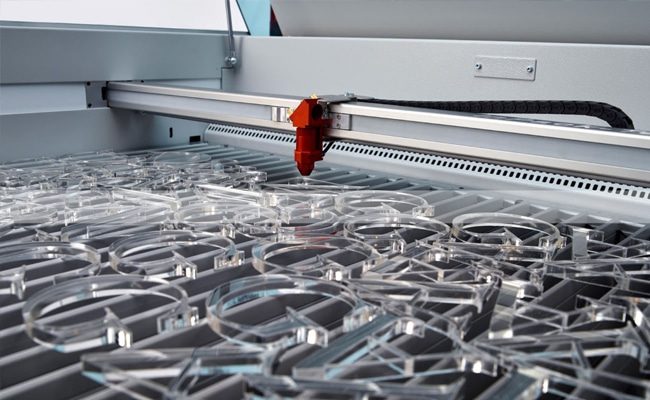
Frequently Asked Questions
- Reduce material waste: Laser cutting is very precise, it can minimize material waste. While traditional cutting methods may produce more fabric waste and offcuts, laser cutting optimizes fabric use, resulting in less material waste.
- Energy efficiency: Laser cutting machines can achieve high energy efficiency, especially compared to some other industrial processes. It uses electricity only during the cutting process, consuming less energy than other cutting methods that may require continuous mechanical movement or heating elements.
- Reduced chemical use: Laser cutting does not require the use of additional chemicals or adhesives that some other fabric cutting methods do. This reduces the environmental impact associated with chemical use and disposal.
- Versatility and customization: Laser cutting allows for customization and versatility of designs. This means the fabric can be cut to specific sizes and shapes, reducing the need for excess fabric or storing pre-cut pieces.
- Longevity and durability: Precise laser-cut edges make the finished product more durable and less likely to wear out or degrade over time. This extends the life of the textile and reduces the frequency of replacement.
- Recycling and circular economy: Laser-cut textile waste may be easier to recycle or repurpose than irregularly shaped fabric waste. This could promote a more circular and sustainable textile economy.
- Reduced labor costs: While not directly related to environmental sustainability, the automation and efficiency of laser cutting can reduce labor costs, thereby contributing to the economic sustainability of textile and fashion businesses.
- Energy: The sustainability of laser cutting depends on the energy that powers the machine. If the energy source is primarily fossil fuels, it may have a higher carbon footprint. Using renewable energy can make this process more sustainable.
- Material selection: While laser cutting can minimize fabric waste, the sustainability of the fabric itself is a separate consideration. The environmental benefits of laser cutting can be further enhanced by choosing eco-friendly and sustainable fabrics, such as organic cotton or renewable materials.
- Machine maintenance: Proper maintenance of your laser cutting machine helps ensure its longevity and efficiency. Frequent repairs, replacement parts, or premature machine retirement can have a negative impact on the environment.
- Chemical treatments: Some fabrics may require chemical treatments before laser cutting to prevent fraying or improve cut quality, and the sustainability of these chemical treatments should also be evaluated.
- Waste disposal: Proper disposal of laser-cut fabric waste is critical to sustainability. Recycling or repurposing fabric waste helps reduce your environmental impact.
- Limited thickness: CO2 laser cutting is generally better suited for cutting thin to medium-thickness fabrics. If you need to cut very thick fabric or multiple layers of fabric, other cutting methods such as rotary blade or oscillating knife cutting may be more suitable.
- Burn marks: The laser cutting process may produce burn marks or discoloration on the cut edges of some fabrics, especially natural fibers like cotton and silk. While this can be minimized through precise control of laser parameters, additional post-processing may be required to remove or hide burnt edges.
- Material limitations: CO2 lasers may not work on all types of fabrics. Some synthetic fabrics with high melting points, such as certain types of polyester, can be difficult to cut with a CO2 laser without fraying or melting issues. In addition, materials containing metal wires or coatings can also cause problems.
- Fraying: Certain fabrics, such as polyester, may melt or fray at the edges when cut with a CO2 laser, especially if the laser settings are not optimized. Edge sealing or additional finishing may be required to prevent wear.
- Initial cost: The CO2 laser cutting machine can be a significant investment. While it offers high precision and versatility, the upfront cost of purchasing and installing the equipment can be high for some businesses.
- Maintenance: Laser-cutting machines require regular maintenance to ensure they operate effectively, including cleaning optics, aligning the laser generator, and replacing worn parts. Maintenance costs add up over time.
- Safety precautions: CO2 laser generators emit invisible infrared radiation that may be harmful to human eyes and skin. Proper safety precautions must be taken when using these machines, including wearing appropriate laser safety glasses and following safety guidelines.
- Complex setup: Setting up and calibrating a CO2 laser cutting machine for a specific fabric type and thickness can be time-consuming and requires expertise and experimentation to achieve the best cutting results.
- Ventilation and fume extraction: When cutting fabrics with a CO2 laser, proper ventilation and fume extraction systems are required. Smoke generated during cutting needs to be safely removed to ensure operator safety and maintain workspace air quality.
- Speed: While CO2 laser cutting is relatively fast, for some applications it may not be as fast as some other cutting methods. Speed may vary depending on the thickness and type of fabric being cut.
- Natural fabrics:
- Cotton: Cotton is one of the most commonly used fabrics for laser cutting because of its versatility and ease of cutting. When cutting with a laser, it produces clean edges and minimal discoloration.
- Silk: Silk is another natural fabric that works well for laser cutting. It is known for its smooth and fine texture, suitable for intricate designs.
- Wool: Wool fabrics can be laser-cut efficiently, making them suitable for a variety of applications. It usually has good resistance to burning or discoloration.
- Synthetic fiber fabric:
- Polyester: Polyester fabrics are widely used for laser cutting because of their resistance to burning and clean cutting. It is commonly used in sportswear and other clothing.
- Nylon: Nylon is another synthetic fabric that can be effectively laser-cut, and it is commonly used in outdoor gear, underwear, and accessories.
- Acrylic: While not a fabric in the traditional sense, acrylic materials can be laser-cut to create intricate designs for applications such as decals and embellishments.
- Blended fabrics:
- Blends of natural and synthetic fibers, such as cotton-polyester blends, can also be effectively laser-cut. Laser performance will vary depending on the composition, so test cuts on specific materials are required to adjust cutting parameters.
- Non-woven fabric:
- Nonwovens, such as those used in medical or industrial applications, can be laser cut efficiently, often with precise results. It is often used in industrial applications and handcrafting.
- Leather:
- Genuine and synthetic leather (artificial leather) can be laser-cut for a variety of applications, including fashion, footwear, and accessories. Laser-cutting leather allows for precise detail, but the thickness and type of leather may affect the cut results.
- Felt:
- Felt is made from natural or synthetic fibers and is one of the most suitable materials for laser cutting due to its consistent thickness and ease of cutting. It cuts cleanly and is often used in crafts, decorations, and clothing accessories.
- Knitted fabric:
- Many knitted fabrics such as jersey, crochet, and rib knit can be precision laser cut. Knitted fabrics are commonly used in clothing and sportswear.
- Microfiber fabric:
- Microfiber materials, such as faux suede and microfiber blends, are compatible with laser cutting and can be used in a variety of applications, including interiors and fashion.
- Ventilation: Laser cutting produces fumes, especially when cutting certain types of fabrics. Adequate ventilation or exhaust systems should be provided to eliminate these emissions from the workspace. Additionally, ensure that ventilation systems are properly maintained to prevent the build-up of harmful smoke.
- Material compatibility: Not all fabrics are suitable for laser cutting. Some fabrics can release toxic fumes or catch fire when exposed to laser light, so it is recommended to ensure that the fabric you are cutting is safe for use with a laser cutter. Natural fibers such as cotton, wool, and silk are generally safe, but synthetic materials may require extra precautions.
- Fire safety: Laser cutting machines generate intense heat, posing a fire risk, especially when working with highly flammable fabrics. Always monitor the cutting process and be prepared to respond quickly to any signs of fire.
- Eye protection: The laser is highly concentrated and may cause eye damage if not controlled properly. Anyone using laser cutting equipment should wear appropriate laser goggles to protect their eyes.
- Personal protective equipment (PPE): In addition to eye protection, operators may need additional PPE such as gloves and appropriate clothing to protect against exposure to laser beams or hot materials. Depends on the specific requirements of the process and cutting material.
- Training: Operators should be adequately trained and certified to use laser cutting equipment safely. They should be aware of potential dangers and know what to do in an emergency.
- Machine maintenance: Regular maintenance of your laser cutting machine helps ensure that it operates correctly and safely. Any damaged or worn parts should be replaced immediately.
- Emergency procedures: Establish clear emergency procedures to respond to emergencies, including what to do in the event of a fire, breakdown, or other unexpected situation. Everyone in the workplace should be aware of the program.
- Clean your workspace: Keep your workspace clean and tidy to minimize the risk of accidents and ensure there is adequate clearance around the laser cutting machine.
- Entry-level machines: Entry-level desktop or hobbyist fabric laser cutting machines start at around $2,000 to $5,000. These machines are typically compact and less powerful, making them suitable for smaller-scale or personal projects.
- Mid-range machine: A mid-range fabric laser cutting machine suitable for small to medium-sized businesses may cost between $5,000 and $20,000. These machines typically offer more power and a larger cutting area than desktop machines.
- High-end industrial machines: High-end industrial fabric laser cutting machines are suitable for mass production and complex applications, and their costs range from $20,000 to hundreds of thousands of dollars or more, depending on size, features, power, and brand.

